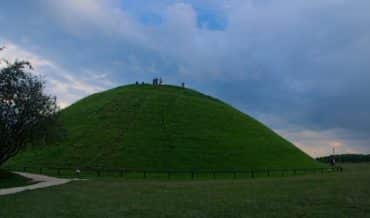Banderia Prutenorum, this words are in Latin, and mean Prussian flags. When after winning the Grunvald battle king Władysław Jagiełło was entering Krakow, his knights were carrying flags of the defeated enemies, Teutonic Knights. The flags were hanged in Wawel Cathedral, and some of later victories were celebrated the same way, by bringing the flags of the enemy to cathedral. In 1448 Jan Długosz ordered the drawings of all these flags from the painter Stanisław Durink, and after adding his own comments named this manuscript “Banderia Prutenorum”. Later it was included in the book “Herby Rycerstwa Polskiego”(Coats of arms of Polish knighthood) published by Bartosz Paprocki in 1584. The next version of “Banderia”, edited and completed by Karol Górksi, was published only in 1958.
Jan Długosz passed on his original manuscript to Jagiellonian University, but already in XVI century it could be found in the Library of Krakow Chapter, where it was kept till 1940. The head of General Government, Hans Frank, who located his residence in Wawel Castle, passed on the manuscript to Malbork, the castle of Teutonic Knights. After the war the Jan Długosz manuscript was found in one of antique shops in London, was bought by Polish Embassy and brought back to Poland to Jagiellonian University. Original flags were lost sometime after the XVII century, but you can admire their exact copies if you visit the Wawel Castle armory.
